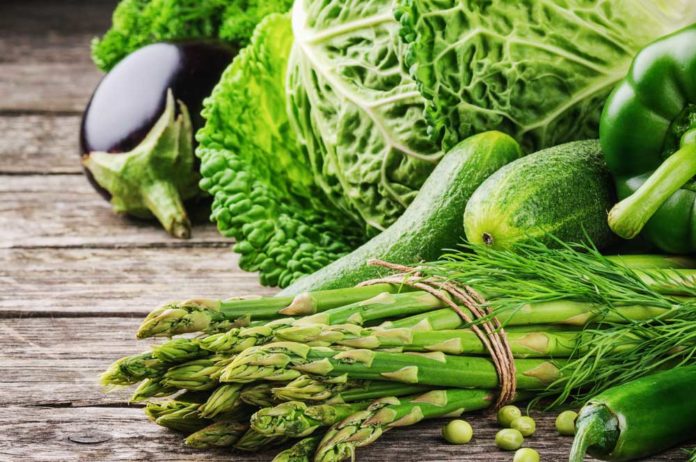Why Is It Importance to Eat Vegetables?
The high nutrient profile validates the importance of eating green vegetables. Along with being low in calories, green veggies are timeless in the following nutrients:
Fiber
Known for its role in digestive and heart health, the fiber content in green veggies is eminent. Recommendations encourage males and females to consume 38 and 25 grams of fiber every day, respectively. Fiber can also assist in weight loss and maintenance, as individuals who consume a high fiber diet are more likely to display a lower body mass index (BMI).
Phytochemicals
With the prefix ‘phyto’ meaning plant in Greek, phytochemicals are the active compounds found in plants and offer their color, odor, and flavor. The consumption of plants and phytochemicals have shown to protect the body’s cells against damage, ultimately defending against and managing cholesterol, hypertension, and diabetes.
Calcium
Along with being widely found in milk and dairy products, calcium is also found in green, leafy veggies. In addition to the mineral’s well-known role in bone support, the mineral shows functionality in the muscular, central nervous, and urinary systems.
Folate
Green veggies are a significant source of folate, a B vitamin essential for cell production and gross. And while the general public requires folate for critical body processes, its availability is critical for healthy fetal development; folic acid helps develop the brain and spine, along with preventing major birth defects.
Iron
While iron tends to be rich in red meats, the mineral is also significant in green, leafy veggies. Iron is a mineral essential for oxygenating blood and carrying it throughout the body. Becoming deficient in iron may lead to fatigue, weakness, pale skin, brittle nails, frequent headaches, dizziness, a sore or inflamed tongue, loss of appetite, a tingling sensation in legs, and a rapid heartbeat.
Magnesium
Being utilized in over 300 physiological processes, obtaining sufficient magnesium is imperative for good health. Magnesium is critical for DNA and RNA production, along with roles in bone development, growth, and maintenance.
Potassium
Acting as both an electrolyte and mineral, potassium works with sodium to regulate heart rhythms and muscle contractions. Research has shown stroke, osteoporosis, and kidney stones have been reduced as potassium intake rises.
Vitamin A
Mostly known to be in orange carrots, vitamin A is found in green vegetables, too. Vitamin A supports normal vision, the immune system, and reproduction.
Vitamin C
Move over citrus fruits, green vegetables also contain vitamin C. The vitamin offers powerful antioxidant properties to boost the immune system and protect the body, further showing to reduce cataract risk.
Vitamin E
Vitamin E acts as a potent antioxidant, protecting cells against damage and preventing disease described in phytochemicals.
Vitamin K
Vitamin K assists in blood clotting, ultimately preventing against excessive bleeding. Additional findings suggest the vitamin may prevent against bone loss and manage morning sickness associated with cancer.
How to Eat More Green Veggies
Make A Salad
As a more obvious choice, make a green, leafy salad! Add broccoli, cucumbers, snap peas, and other favorite veggie varieties. Pair with a lean protein source to add flavor depth and substance, along with a heart healthy, olive oil-based dressing.
Mix into Smoothies
Looking past the anticipated color change, mixing green veggies into smoothies is a simple way to increase veggie intake. Simply throw in a handful or two of fresh spinach and mix until the smoothie is smooth.
Throw in Meals
From eggs, to soups, to casseroles, throwing in kale, spinach, and other greens offers not only rich nutrients, but bulk without adding a substantial calorie load.
Sneak in Sauces
Be sneaky with greens by throwing them into sauces, including tomato, pizza, and pesto sauces. And while the green color of pesto is not so sneaky, the flavor profile may just overshadow the appearance!
Try New Cooking Technique
Trying new cooking and heating methods offers diverse flavors. For instance, if not too intrigued with chomping on raw broccoli, try roasting the greens. Additionally, preparing green veggies with the healthy fats of olive or canola oil helps increase the absorption of the fat-soluble.
Go Green with Balance
Perhaps one of the simplest ways to eat more green veggies is having them ready and delivered directly to your door… Sound good to be true? Balance by bistroMD makes that hopeful dream become your nutritious reality! Balance prepares whole, well-balanced meals with a variety of healthy greens, including green beans, asparagus, broccoli, and spinach. Find more about Balance by bistroMD’s a la cart meal delivery service here.








